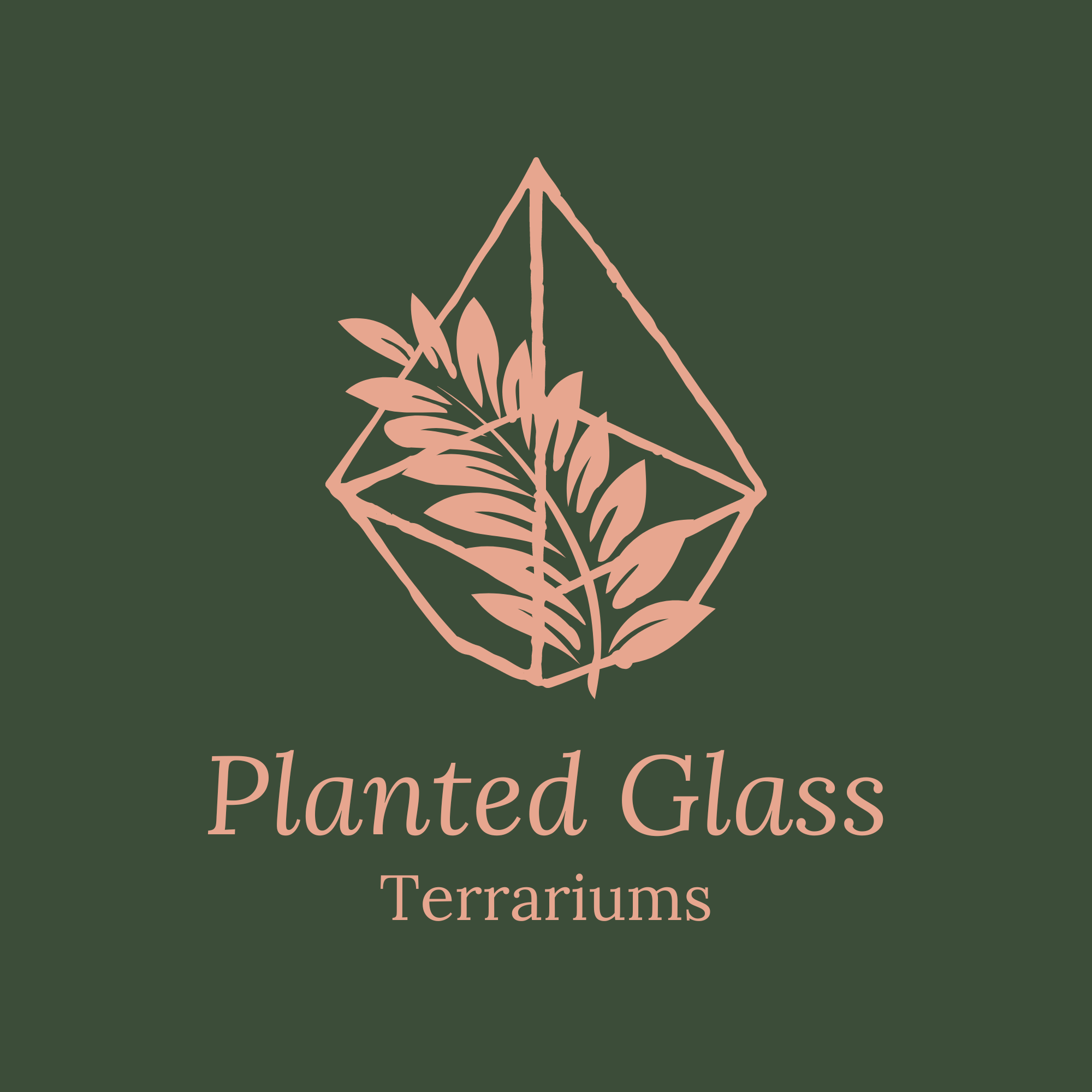There's nothing worse than admiring your terrarium up close, then noticing a patch of mold growing inside. Most often, mold occurs due to overwatering. However, there are multiple reasons mold might be growing in your terrarium. Let's take a look at why mold might be growing in your terrarium and how to fix it.
Regardless of the cause, the first step to get rid of mold in your terrarium is to remove it.
Grab a pair of tweezers or a spoon and remove any visible patches of mold. Depending on the severity of the outbreak, simply removing the mold may solve the issue.
That said, it's important to figure out why the mold is growing to prevent it from returning in the future.
Cause #1: Overwatering
Your terrarium should have some condensation on the inside of the jar and moisture in the soil at all times, indicating a healthy level of humidity. However, if you see mold growing in your terrarium, the first step is to check for overwatering.
In severe cases of overwatering, you may see puddles forming on the surface of the soil. However, it's usually more subtle. Check to see if the soil looks very dark in color or feels soggy to the touch. If so, it's likely too wet.
How to fix it: Take the lid off your terrarium and let it sit open for 1-2 hours to allow some moisture to evaporate. Close the terrarium and see if the mold reoccurs. Repeat this step as needed.

Mold growing inside one of the first terrariums I made because I overwatered it.
Cause #3: Ingredients that aren't waterproof
When mold is growing in your terrarium, it may indicate the presence of materials that shouldn't be there. Sometimes, well-intentioned but misinformed plant shops will add decorations that simply don't belong in terrariums, such as preserved moss. If this is the cause, you'll see the mold growing primarily on and around the decoration.
If the mold is growing on the soil, the cause is either overwatering or a poor quality soil mix. For example, standard potting soil often contains elements like bark chips that work great for houseplants but will mold in the high humidity of a closed terrarium. If you think your materials might be the culprit, check out my guide to terrarium layers.
How to fix it: Remove any decorations that aren't waterproof. If you suspect the soil or other materials are the issue, you may have to rebuild your terrarium using higher quality ingredients.
Cause #4: Plants that aren't suited to terrariums
Unfortunately, some plants simply aren't suited to terrarium life. The most dramatic example is succulents or cacti, which will rot within a matter of weeks if planted inside a sealed jar. Some tropical plants also don't thrive in closed terrariums. If this is the case, you'll notice some leaves starting to rot and then mold.
Mold can also grow on plants or materials you've collected from outside if you don't sanitize them before adding them to your terrarium. For example, before adding moss I've collected from outside to my terrariums, I soak it in water for 30 mins to allow any detritus or bugs to float to the surface. Then I let it grow in my propagation box for about a month to make sure it can tolerate terrarium conditions and won't get moldy.
How to fix it: Remove decaying plant matter from the terrarium as soon as possible so it doesn't become a breeding ground for mold. Iff the mold isn't too severe, spray a mixture of diluted apple cider vinegar onto the affected plants to kill it. If the mold looks like it is already killing the plants, it's probably time to rebuild the terrarium. Remove all materials, wash the container well, then add fresh soil and plants.

A terrarium from Buzzfeed. Unfortunately this design is very prone to mold because air plants are not suited to closed terrariums and preserved moss is not waterproof.
Cause #4: Your terrarium is otherwise totally healthy!
Here's the thing- mold spores are basically everywhere. If the environment is favourable, then they will germinate and become quite visible in your terrarium. Even if you do everything right, mold can occasionally grow in an otherwise healthy terrarium.
Maybe you overwatered your terrarium just a bit and that was enough for the mold to germinate. Or maybe it hitch-hiked in on a plant you got from the store. You might notice mold growing on decorations that are waterproof and wonder how the heck it got there.
Mold happens, and if you make enough terrariums, you'll probably see it. That's why best practice is to add springtails to all of your terrariums.
How to fix it: Springtails are tiny harmless bugs that feed on mold and help to keep your terrarium healthy. I add them to all my own terrariums and recommend them to my customers who aren't squeamish about bugs. The best part about springtails is that they eat mold at its sporophyte stage before it can reproduce. Read more about bioactive bugs and how they can help your terrariums.

This is the first terrarium I posted on my social media when I was starting my business. I didn't have my soil mix perfect yet and it got a bit of mold. Once I added springtails, the mold went away within a week. The springtails are so small you can't even spot them in the picture!

